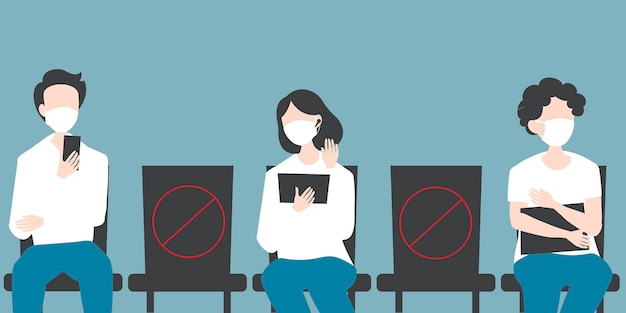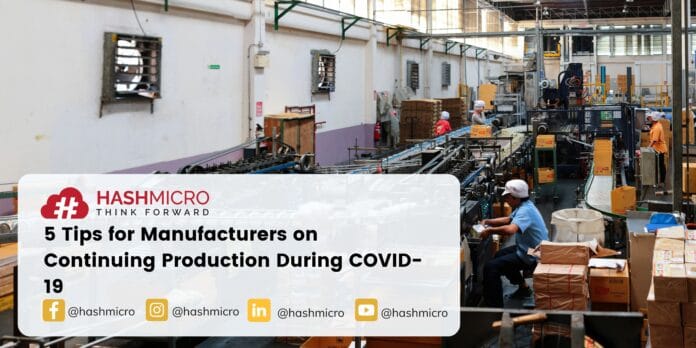Since the World Health Organization (WHO) declared the coronavirus outbreak, also known as COVID-19, a pandemic, the Indonesian government has urged people to stay at home as a precautionary measure. Of course, this decision has a significant impact on entrepreneurs, particularly those in the production industry who do not use an ERP software.
Production must continue at manufacturing plants, relying on all the equipment and machines required. Like it or not, manufacturing plants still have to operate. The challenge is how to keep production running when the transmission of COVID-19 must also be avoided. Below are some safety tips manufacturers can apply.

Table of Content:
Table of Content
1. Perform Routine Temperature Checks
Employees must do temperature checks routinely every day. Try to actively encourage sick and vulnerable employees (those at high risk) to stay home. Ask employees to report immediately with a document management system if they feel unwell.
Provide clean masks and encourage your employees to wash their hands or sanitize them daily. Consider providing free lunch, so your employees don’t have to look for food outside, thus reducing transmission risk.

2. Reduce Operational Hours
As consumer demand is currently declining, reducing operational hours is a wise decision you can make. However, there must be an agreement between you as the leader of the company and your employees regarding working hours, especially if there have to be salary deductions.
3. Implement Physical Distancing
Employees must take physical restrictions more seriously. For instance, limit the number of people in a room. Also, make sure everyone maintains two-meter distances between each other by staggering start times, creating one-way walk-throughs, opening more entrances and exits, or changing seating layouts in breakrooms.

4. Shift Workers More Often
If you do not plan to minimize your production capacity by reducing working hours, you should shift your workers more often. To clarify, this must be discussed with all your staff.
Increasing the number of shifts makes the physical distancing practice more effective because employees will work at different times. They won’t have to work in the same room simultaneously.

Conclusion
To minimize the risk of COVID-19 transmission, you should start to rely more on automation. Not only on hardware like industrial robots but also on software, especially those that automate production planning. But why is it so necessary?
In other words, manufacturing software simplifies the production process by automating most of its procedures. Thus, human labor can be reduced, which can be an effective solution to minimize the risk of transmission of COVID-19.

In conclusion, HashMicro’s manufacturing system facilitates production planning by allowing manufacturers to create production schedules, manage work routes, determine the person in charge (PIC), maintain resources, and monitor raw materials and work-in-progress (WIP). The web-based system also allows manufacturers to calculate the effectiveness of their industrial machines and equipment. The company can track the whole process in real time.



































